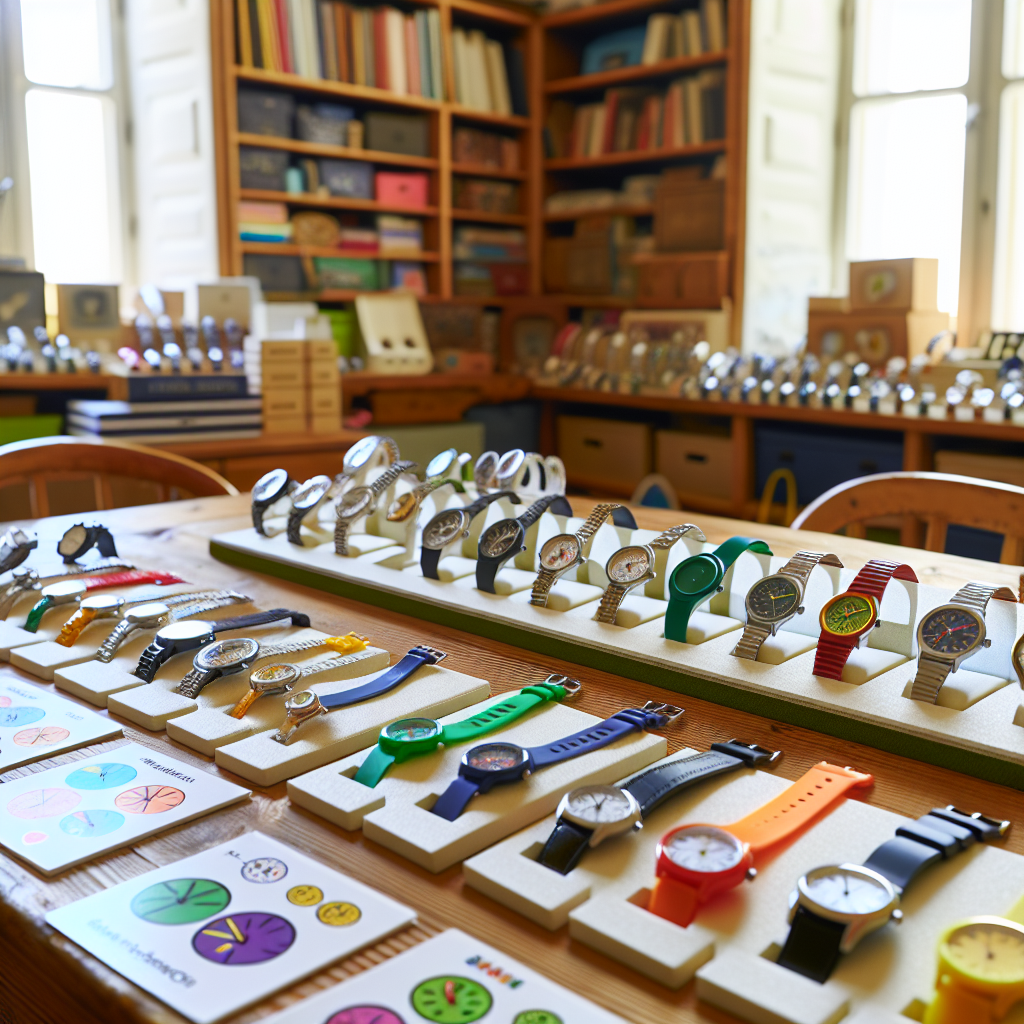Junior Watch Collecting: Starting Your Child’s Luxury Timepiece Portfolio
The Timeless Value of Luxury Watches for Children
In the world of luxury and refinement, timepieces have long been regarded as more than just accessories. They are functional works of art, intricate feats of craftsmanship, and often, heirlooms that span generations. While luxury watches typically symbolize achievement and distinction in adulthood, an emerging trend is seeing affluent parents introduce their children to the world of fine horology at increasingly younger ages.
Junior watch collecting is not just about style—it is an educational journey that encourages responsibility, patience, investment insight, and a deep appreciation for craftsmanship. From learning the traditions of storied Swiss maisons like Patek Philippe, Rolex, and Audemars Piguet to understanding the value of limited-edition releases, starting a child’s luxury watch portfolio is an exercise in heritage, precision, and financial acumen.
Affluent families have long recognized the importance of instilling financial literacy and investment awareness in their children, and luxury watches provide an interesting, tactile entry point. Unlike fleeting trends in fashion or tech, well-chosen timepieces appreciate in value over time, offering a tangible demonstration of asset growth. Early exposure to top-tier watchmaking can also foster discipline, as children learn the responsibility of care, maintenance, and strategic acquisition.
Beyond financial advantages, there is also a cultural and historical enrichment element. A timepiece, after all, is a living artifact that tells a story—of innovation, aesthetics, and mechanical artistry. In an age of effortless digital convenience, where the time is always available on a smartphone, equipping children with luxury wristwatches and teaching them about their significance imparts a sense of connection to craftsmanship, tradition, and legacy.
If you are considering curating a junior watch collection for your child, it is essential to take a thoughtful approach—selecting brands with appreciable value, understanding market trends, and ensuring the experience remains both enjoyable and educational. This article explores the insights, studies, and expert recommendations surrounding the growing practice of introducing the next generation to luxury timepieces.
Why Junior Watch Collecting is More Than Just a Status Symbol
Luxury watches are often viewed as status symbols, but for children, they can offer a much deeper significance. A well-curated timepiece collection is an introduction to responsibility, discipline, and financial literacy.
Junior watch collecting fosters patience and strategic thinking, as children learn the value of long-term investment. Instead of disposable trends, they engage with objects that gain sentimental and financial worth over time. This helps instill an appreciation for craftsmanship and heritage, values that extend beyond the world of horology.
Additionally, exposure to high-end timepieces connects young collectors to history and engineering. Whether it’s learning about the innovations of George Daniels or the heritage of Swiss maisons, children develop research skills and a sense of appreciation for fine mechanical artistry.
Professional & Medical Studies Supporting Junior Watch Collecting
Delayed Gratification and Financial Responsibility
Studies in developmental psychology have long emphasized the importance of teaching children delayed gratification, financial literacy, and the art of collecting. One particularly relevant study comes from Dr. Walter Mischel’s famous Stanford Marshmallow Experiment, which demonstrated that children who learned to delay gratification tended to have better long-term success in various aspects of life, including financial stability ([Shoda, Mischel, & Peake, 1990](https://pubmed.ncbi.nlm.nih.gov/2218526/)).
Teaching children about luxury watch collecting taps directly into this idea. By understanding that carefully selected timepieces may gain value over decades, they develop patience, strategic thinking, and financial acumen.
Investment and Asset Growth from an Early Age
According to a study by the National Endowment for Financial Education (NEFE), financial literacy correlates strongly with responsible money behavior and wealth accumulation in adulthood ([NEFE, 2018](https://www.nefe.org/)).
Early exposure to investment-minded activities—like watch collecting—can help prepare children for future asset management. Many luxury watch brands even cater to younger collectors, offering entry-level pieces that mix functionality with investment potential, making them a practical choice for young learners.
Cognitive and Emotional Benefits of Physical Asset Ownership
Research in child psychology has shown that tangible, hands-on assets help with both cognitive and emotional growth. A report from the American Academy of Pediatrics indicates that introducing children to physical objects of value—rather than abstract digital-based currency—is crucial in fostering a true understanding of investment and appreciation ([AAP, 2019](https://pediatrics.aappublications.org/)).
When a child wears and cares for a fine watch, they begin to develop a sense of mindfulness and responsibility that digital assets simply do not offer. Owning a luxury timepiece requires attention to maintenance, an understanding of mechanical function, and a commitment to handling valuable items with care.
Cultural and Educational Insights from Horology
Parents should also consider the implications of historical and craftsmanship-based learning. Experts in educational psychology advocate for experiential learning, where children engage in activities that involve real-world applications rather than passive consumption.
The act of collecting watches encourages research skills, attention to detail, and historical curiosity. From studying innovations in horology to understanding the materials used in high-end timepieces, young collectors engage with history, engineering, and aesthetics in a meaningful way.
Choosing the Right Luxury Timepieces for Your Child’s Collection
When selecting luxury watches for a junior collection, consider the following factors:
– Brand Heritage & Resale Value: Opt for reputable brands like Rolex, Patek Philippe, and Audemars Piguet, known for consistent appreciation in value.
– Durability & Functionality: A child’s watch should be robust enough to withstand daily wear while still reflecting fine craftsmanship.
– Educational Value: Select models that highlight mechanical innovations, craftsmanship, or historical significance.
– Long-Term Investment Potential: Look for limited editions, classic models, or watches with strong resale demand.
By curating a collection with these considerations in mind, parents can ensure that a child’s experience with watch collecting is both educational and financially rewarding.
Conclusion: A Timeless Gift of Knowledge and Investment
Starting a junior luxury watch collection is about far more than simply gifting an expensive accessory—it is an investment in knowledge, responsibility, and tradition. By thoughtfully selecting pieces that hold both sentimental and financial value, parents of means can provide their children with a meaningful introduction to asset management, patience, and appreciation for heritage craftsmanship.
Whether as a tool for financial literacy or a lifelong passion in the making, a carefully curated watch portfolio is an enduring gift that grows with time—just like the lessons it imparts.
Summary:
Starting a junior luxury watch collection is an investment in knowledge, responsibility, and tradition. By selecting watches with sentimental and financial value, parents can provide their children with a meaningful introduction to asset management, patience, and appreciation for heritage craftsmanship. This emerging trend is about more than just status – it fosters financial literacy, delayed gratification, and a connection to history and engineering.
References:
– Shoda, Y., Mischel, W., & Peake, P. (1990). “Predicting Adolescent Cognitive and Self-Regulatory Competencies from Preschool Delay of Gratification: Identifying Diagnostic Conditions.” *PubMed.* [https://pubmed.ncbi.nlm.nih.gov/2218526/](https://pubmed.ncbi.nlm.nih.gov/2218526/)
– National Endowment for Financial Education. (2018). “Financial Literacy in Childhood and Its Impact on Financial Behavior in Adulthood.” *NEFE.* [https://www.nefe.org/](https://www.nefe.org/)
– American Academy of Pediatrics. (2019). “Financial Learning and Asset-Based Education for Kids.” *AAP Publications.* [https://pediatrics.aappublications.org/](https://pediatrics.aappublications.org/)

Dominic E. is a passionate filmmaker navigating the exciting intersection of art and science. By day, he delves into the complexities of the human body as a full-time medical writer, meticulously translating intricate medical concepts into accessible and engaging narratives. By night, he explores the boundless realm of cinematic storytelling, crafting narratives that evoke emotion and challenge perspectives. Film Student and Full-time Medical Writer for ContentVendor.com




